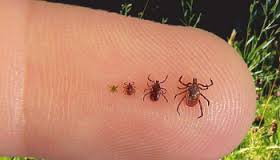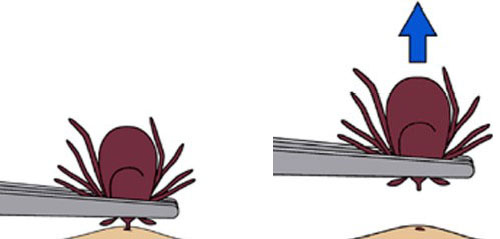The Clock is Ticking Towards Tick Time
/Enjoy Hiking and stay in the center of the trail
Stages of tHE deer tick
The Clock is Ticking Towards Tick Time
A tick is a tiny creature with an amazing power to wreak havoc upon an otherwise pleasant family outing on a day filled with sunshine.
Ticks can attach to any part of the human body, but are often found in hard-to-see areas such as the groin, armpits, and scalp.
Most of the time, ticks can be removed swiftly at home using the following tips:
1) Stay calm. You are must larger than the tick.
2) Locate tweezers
3) With your thumb and forefinger, press down lightly on the skin on either side of the tick and pull outward. This will make the skin taut and easier to isolate the little critter.
4) Forget it is a little critter. Pretend it is a little piece of gravel.
5) With the tweezers, grab the head of the tick, or the entire tick if it is tiny, and pull straight up with steady, even pressure. Do not jerk or twist the tick. You may feel a little resistance and your child may feel a little pinch at this point.
6) 1-2-3 PULL!!
Grab the tick by the head and pull straight upwards
7) Once the head is removed, soak the area in soapy water. Treat it like you would if a splinter had been removed. Consider applying antibacterial cream and a band aid.
8) Expect a mild irritation of the skin. It may scab. It may look like a mosquito bite afterwards simply due to the bite and the removal process. This should go away in 1-2 days. Watch for signs of infection.
9) Do not use petroleum jelly, nail polish, a lit match or any other remedy to smother the tick. Your goal is to just get the tick out.
10) Watch for a rash that appears at the site and spread out reaching a diameter of 12 inches or more between 3 -30 days after the tick bite. This rash is an early sign of Lyme Disease
Lyme Disease
In most cases, the tick must be attached for 36 to 48 hours or more before the Lyme disease bacterium can be transmitted.
Early Signs and Symptoms of Lyme Disease (3-30 days after tick bite)
· Fever, chills, headache, fatigue, muscle and joint aches, and swollen lymph nodes
· Erythema migrans (EM) rash:
o Occurs in approximately 70 to 80 percent of people infected with Lyme Disease
o Begins at the site of a tick bite after a delay of 3 to 30 days (average is about 7 days)
o Expands gradually over a period of days reaching up to 12 inches or more (30 cm) across
o May feel warm to the touch but is rarely itchy or painful
o Sometimes clears as it enlarges, resulting in a target or “bull's-eye” appearance
o May appear on any area of the body
Please consult your doctor for further assistance with tick removal or concerns about symptoms.
Content source:





